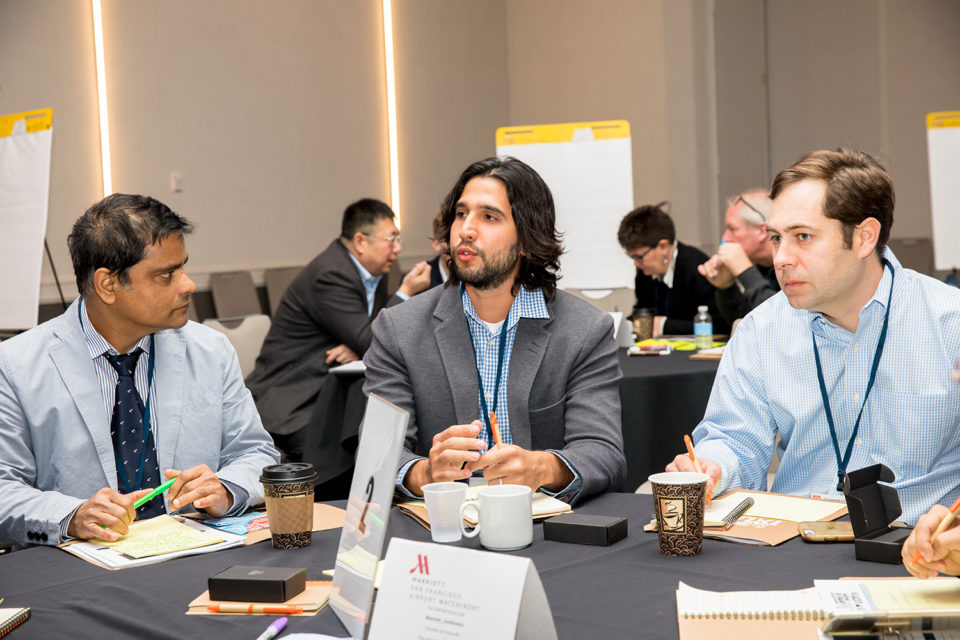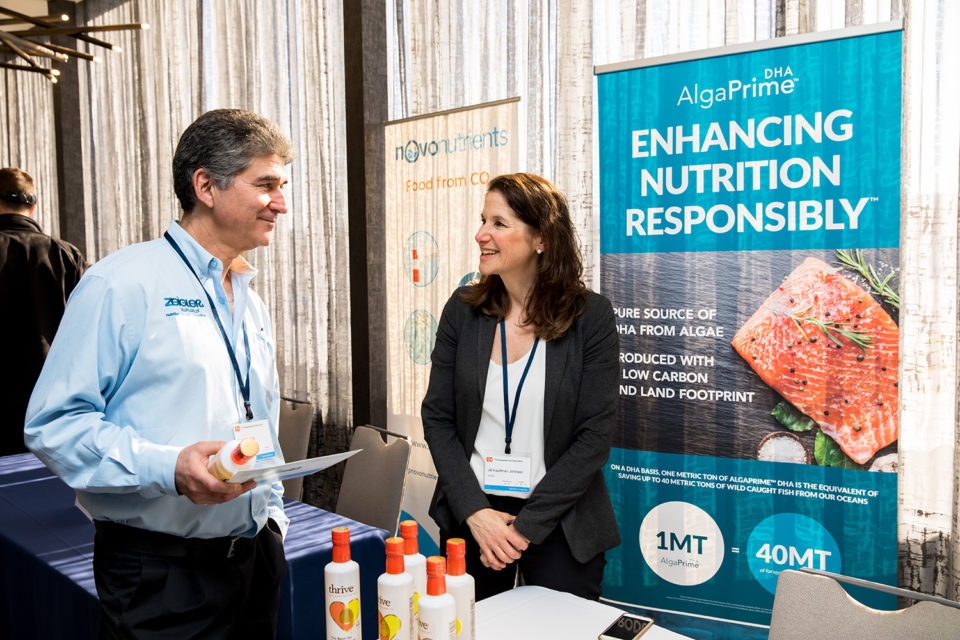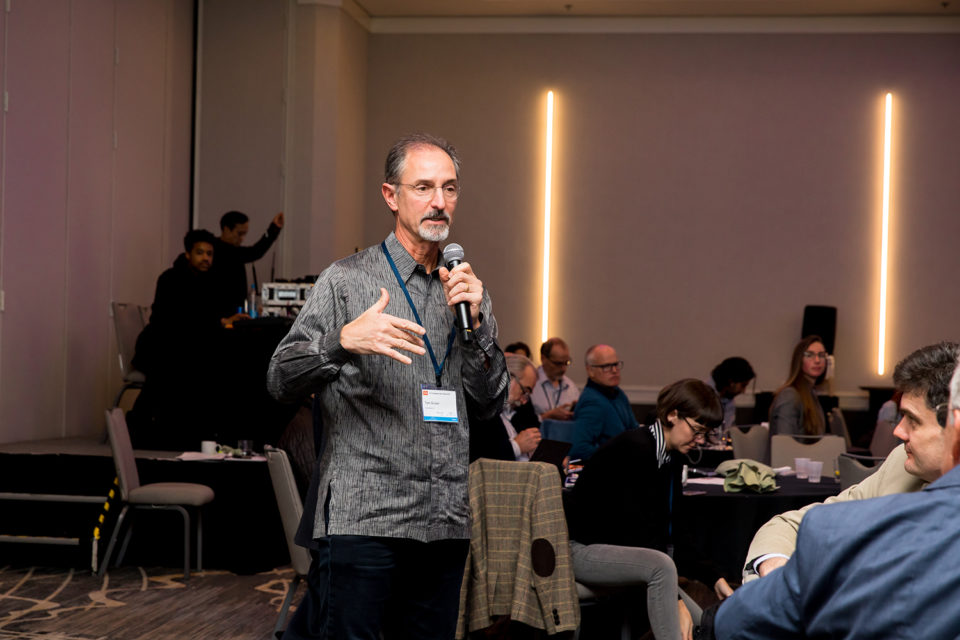With fish oil replacement contest in the backdrop, dozens of feed manufacturers, ingredient providers and farmers gather to talk shop

In California’s Silicon Valley, where startup-business failures are worn like badges of honor by ambitious entrepreneurs, shoot-for-the-moon goals are the norm.
At the F3 (fish-free feed) Companies Got Talent event in Burlingame, Calif., last week, alternative (non-marine animal) aquafeed ingredient companies spoke of their ultimate moonshot: decoupling aquaculture from fishmeal and fish oil in a quest for greater sustainability.
“People make money in Silicon Valley by predicting the future and getting there before everyone else does – maybe by inventing the future,” said Tom Gruber, a researcher, designer and entrepreneur who was previously co-founder, CTO and VP-design for Siri, the voice-activated intelligent assistant incorporated into Apple products. Another guest speaker, Neil Davé,project lead at X, the Moonshot Factory (formerly Google X), said the innovations they are looking for are typically found at the intersection of a huge problem, a radical solution and a breakthrough technology – all of which could apply to aquaculture.
Will fish farming’s future be fueled by technology, independent from marine animal ingredients? Which of the leading solutions – algae, insects and single-cell proteins or microbial meals – will lead the charge? The consensus held that all have important roles to play. Including fishmeal and fish oil, at least for the foreseeable future.
“If the majority [of these solutions] do not succeed, we’re in trouble,” said Mike Velings, co-founder and managing partner of Netherlands-based investment firm Aqua-Spark. “We’re finally seeing more and more initiatives pop up, whereas five years ago it was just a handful. But we have a long way to go, probably another decade out before we have meaningful volume.”

Fish oil contest
Whereas the inaugural F3 contest, which launched in 2015, was a global fish-free feed sales competition, the second iteration is centered on fish oil alternatives. Providing viable alternatives to fish oil requires massive scale of operations: Thus, this time around there are four official contestants: China-based Guangdong Evergreen Feed Industry Co. Ltd., China-based Shen Zhen Alpha Feed Co. Ltd., Netherlands-based Veramaris and the UK/U.S.-based team Aquaculture Innovation and Qualitas Health. The winner – the company with the most oil sold by Sept. 15, 2019 – will be announced in the fall.
Contestants are required to meet nutritional requirements of fish with their products, which can be in dry powder or liquid form. They must be free of marine animal ingredients and meet certain fatty acid criteria: a minimum of 0.2 percent ARA (arachidonic acid), 8.4 percent EPA (eicosapentaenoic acid), 4.9 percent DHA (docosahexanoic acid) and an omega-3:omega-6 long-chain polyunsaturated fatty acid (LC-PUFA) ratio of 12:1. (All percentage values relate to total fat.)
Dr. Yongjie Jiang, deputy director of freshwater fish feed research for Evergreen (the winner of the first fish-free feed contest) said that his company considers revenue first, research second and fish health third.
“This is based on the reality of the market in China,” he said through a translator. “It all comes down to cost, whether alternative ingredients increase or decrease.”
With so many new ingredients available to them, feed formulators are currently mixing and matching ingredients to target desired results, which vary by species, like high growth and survival rates, as well as overall fish health.
“It’s not rocket science. But meeting the needs of a trout farmer 2,000 meters above the sea is one thing and meeting the needs of a tilapia farmer at sea level is another,” said Anders Bylling, CEO and managing director for Aller Aqua, based in Qingdao, China.
Sunil Kadri, founder of Aquaculture Innovations, spoke on behalf of another contestant, Qualitas Health, which produces algal oil in Texas and New Mexico. The benefits of this method, Kadri explained, include lower cost inputs, less chemical use, complexity and instrumentation in the production process and “overlaps with traditional agriculture.”
The Qualitas Health facility in Imperial, Texas, covers 360 acres, with just 55 operational, giving the company ample room to scale up. Of its 900 acres in New Mexico, just 110 are operational.
“You need lots of sun, and limited moisture in the air,” said Kadri, adding that the company is pivoting to animal feeds from nutraceuticals. The fish oil substitute it produces contains 17 percent EPA and 17 percent DHA. The company was founded in 2013 and launched its first products in 2017. “There’s been a lot of failures in this area,” he added.
Another contestant, Veramaris, has no intention of failing, not with its $200 million investment in an algal oil fermentation and production facility in Blair, Nebraska, which Christian Martin, global business director, said will come online this year.
Veramaris, a 50-50 joint venture between DSM and Evonik based in Delft, the Netherlands, claims it can produce 15 percent of the global supply of EPA and DHA for the salmon farming industry.
“Aquaculture needs ingredients to keep growing,” said Martin, “and for the performance and health profile that consumers expect [from seafood]. This is the breakthrough that will enable the future of the aquaculture industry.”

Placing value on forage fisheries
Manaswita Konar, lead ocean economist at the World Resource Institute’s Sustainable Ocean Initiative, gave the audience a sneak preview of a paper she and her colleagues produced, titled “Illustrating the Hidden Economic, Social and Ecological Values of Global Forage Fish Resources.” Completed when Konar was working as a consultant for the Anthropocene Institute (part of the F3 team), the paper has been submitted to the Elsevier journal Resources, Conservation and Recycling.
Its findings show that forage fisheries have major impacts on the environment, national economies and even culture. It estimates the annual first-sale value of global forage fisheries at $18.7 billion, and that the harvest supports 5.6 million jobs and $79 billion in revenue to the aquaculture industry.
“The diversity that they bring is high,” she said, adding that forage fisheries indirectly impact coastal tourism. People don’t go scuba diving vacations to see sardines, but if forage fisheries are depleted, the “charismatic species” they do seek would be at risk. “There is a lot of value at stake if these resources are depleted and not managed sustainably.”
Big bets on bugs, new business
Agriprotein, an insect meal manufacturer based in South Africa, is going from “zero to 5,000 tons the hard way,” according to COO John Diener, explaining how the company’s 11,000-square-meter, $42 million facility in Cape Town is progressing. Diener told the Advocate that the company is planning another, similar, facility in Johannesburg.
The black soldier fly larvae (BSFL) that the company cultivates feed on a food-waste substrate that varies day to day and season to season – depending on what raw materials are available. The flies are “finicky creatures if you want to grow them in an industrial manner,” Diener said, explaining that the culture environment can’t be too hot, too cold, too dry or too wet. “They’re like Goldilocks,” he said.
Glen Courtright, who sold his BSFL company Enviroflight (Yellow Springs, Ohio) in 2017 to Intrexon and Darling Ingredients, spoke about the seven-year process of building the company from scratch, with a combination of trade secrets and patents, until sale. He described the time as “sheer chaos.”
Courtright discovered that the early documented BSFL research wouldn’t scale. There were high mortality rates, inconsistent growth rates, odor and seasonal variations. Enviroflight focused on a mass-rearing infrastructure with environmental controls, striving to maximize densities. But he established a strong corporate culture and did not borrow any money that was not needed.
There are numerous insect meal companies on the scene now, including Ynsect and Innova Food Systems, both based in France.
Jose Villalon, corporate sustainability director for Nutreco, said that he is still “inspired and enthusiastic about this business” because of the innovation he’s seeing throughout the alternative ingredients sector.
“All of this is being done with no pull from the retail side. It keeps me going,” he said. “[The World Wildlife Fund] says today we are consuming the equivalent of 1.5 planet earths worth of natural resources. If we are to earn our license to operate over the next three decades, we’re going to have to demonstrate how we’re going to reduce dependency on marine resources.”
The “new business paradigm” he wants to see is marked by innovation being adopted throughout the entire value chain.
“We need to change the way we do business. If we continue to sell fish as a commodity, it’s going to be very difficult to be first movers and accelerate the mainstreaming of these alternative ingredients,” he said. He argued that seafood buyers should be sold a supply chain instead of a product – distributors should meet with buyers alongside their feed manufacturer and alternative ingredient suppliers, to demonstrate a “total commitment” to sustainability.“There’s room for everyone in this field. I don’t see competitors. I see potential partners to complement each other. There’s a large basket of ingredients for us to choose from.”
And, despite all the talk of replacing them, that basket includes fishmeal and fish oil, said Dave Robb, sustainability manager for Cargill Aqua Nutrition.
“We need to stop demonizing raw materials,” he said. “It’s not about the raw materials. It’s about the nutrients.”
Investment on the rise
Technology is transforming aquaculture: new animal health and welfare solutions are emerging, ambitious production facilities like recirculating aquaculture systems (RAS) are being built and, of course, novel feed ingredients are proliferating.
Thus, investors are eyeing aquaculture more favorably than ever before. And even more capital would enter the sector with one big splash in the space, said Carsten Krome, co-founder of aquaculture business accelerator Hatch, which seeks engagement with companies at very early stages.
“It’d would be amazing to see one successful exit,” he said. “If someone could list at a billion bucks, it would be amazing for all of us. One success story that everyone hears about would spark a new wave.”
Hatch, for its part, is attracting dozens of new applications to its intensive three- to four-month program, which conducted two successful cohorts in 2018. These companies come to Hatch to get traction, and Hatch is looking for companies that have strong management teams as well as proprietary and scalable technology.
“We know the market, and can assess their technology,” he said. “There are lots of promising companies that simply have not been able to execute. Perhaps there’s some chemistry missing.”
Monica Jain, founder of Fish 2.0, describes her organization as a community of innovators and investors looking at seafood businesses at all stages. She said alternative aquafeed ingredient providers all have potential to make a mark in the industry, as do innovative methods to deliver feeds. The aquaculture industry, she said, is “traditionally inefficient.”
“There won’t be one success story; there will be multiple success stories. And without multiples, we’re not going to solve this problem.”
Follow the Advocate on Twitter @GAA_Advocate
Now that you've finished reading the article ...
… we hope you’ll consider supporting our mission to document the evolution of the global aquaculture industry and share our vast network of contributors’ expansive knowledge every week.
By becoming a Global Seafood Alliance member, you’re ensuring that all of the pre-competitive work we do through member benefits, resources and events can continue. Individual membership costs just $50 a year. GSA individual and corporate members receive complimentary access to a series of GOAL virtual events beginning in April. Join now.
Not a GSA member? Join us.
Author
-

James Wright
Editorial Manager
Global Aquaculture Alliance
Portsmouth, NH, USA
Tagged With
Related Posts

Aquafeeds
Talent show: Aquafeed companies show off at F3
Aquafeed manufacturers and alternative feed ingredient suppliers from all over the world gathered in Silicon Valley for F3, the Fish Free Feed contest. In the hub of innovation, solutions to a global problem were on full display.

Aquafeeds
Alternative feed ingredients support continued aquaculture expansion
Identifying sources for essential macro- and micronutrients is important, as well as understanding how best to manufacture feed to required physical specifications when using these new raw materials.

Aquafeeds
Single-cell protein aquafeed ingredient first to gain GRAS designation
Massachusetts-based biotechnology firm KnipBio is the first single-cell protein manufacturer serving the aquafeed industry to earn Generally Regarded as Safe designation from the U.S. Food and Drug Administration.

Aquafeeds
A new nutrient for aquaculture, from microbes that consume carbon waste
Biotechnology firm NovoNutrients aims to produce a line of nutraceutical aquafeed additives as well as a bulk feed ingredient that can supplement fishmeal. Its process includes feeding carbon dioxide from industrial gas to a “microbial consortium” starring hydrogen-oxidizing bacteria.

